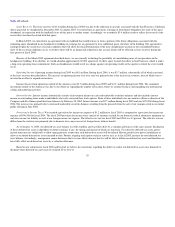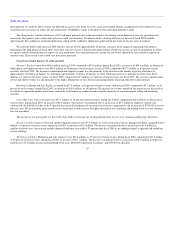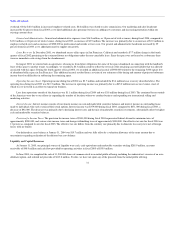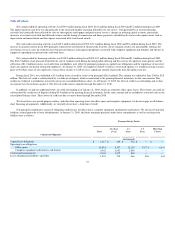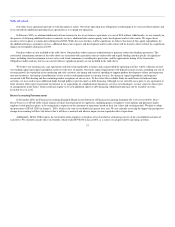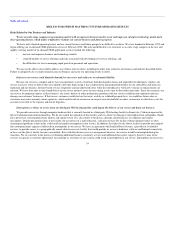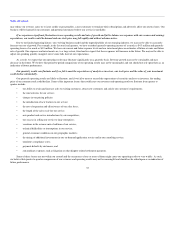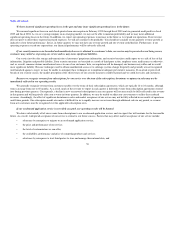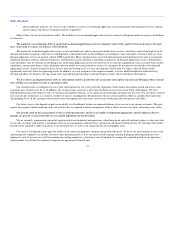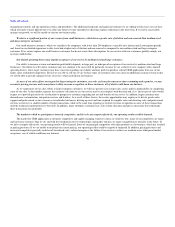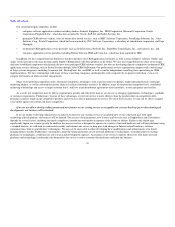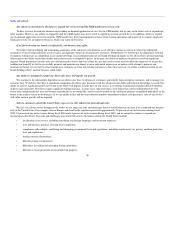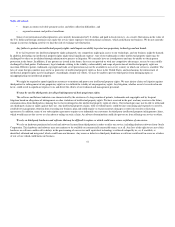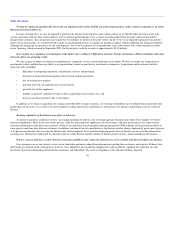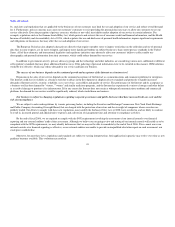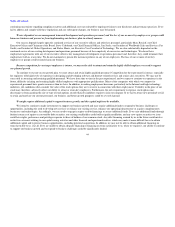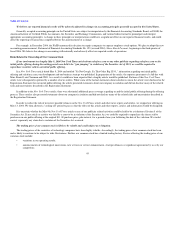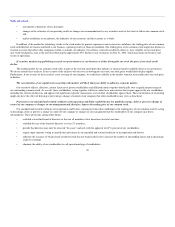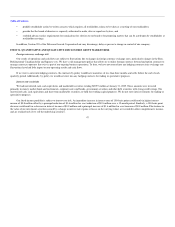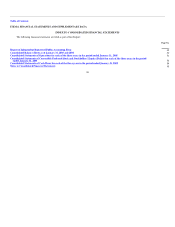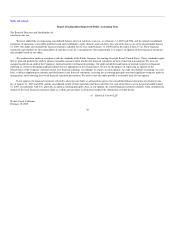Salesforce.com 2004 Annual Report Download - page 43
Download and view the complete annual report
Please find page 43 of the 2004 Salesforce.com annual report below. You can navigate through the pages in the report by either clicking on the pages listed below, or by using the keyword search tool below to find specific information within the annual report.
Table of Contents
Our current principal competitors include:
• enterprise software application vendors including Amdocs Limited, E.piphany, Inc., IBM Corporation, Microsoft Corporation, Oracle
Corporation, PeopleSoft, Inc., which has been acquired by Oracle, SAP AG and Siebel Systems, Inc.;
• packaged CRM software vendors, some of whom offer hosted services, such as BMC Software Corporation, FrontRange Solutions, Inc., Onyx
Software Corp., Pivotal Corporation, which has been acquired by CDC Software Corporation, a subsidiary of chinadotcom corporation, and Sage
Group plc;
• on-demand CRM application service providers such as Siebel Systems, NetSuite, Inc., RightNow Technologies, Inc., and Salesnet, Inc.; and
• enterprise application service providers including British Telecom, IBM and Corio, Inc., which has been acquired by IBM.
In addition, we face competition from businesses that develop their own CRM applications internally, as well as from enterprise software vendors and
online service providers who may develop and/or bundle CRM products with their products in the future. We also face competition from some of our larger
and more established competitors who historically have been packaged CRM software vendors, but who are developing directly competitive on-demand CRM
application services offerings, such as Siebel Systems through Siebel CRM OnDemand. Our professional services organization competes with a broad range
of large systems integrators, including Accenture Ltd., BearingPoint, Inc. and IBM, as well as smaller independent consulting firms specializing in CRM
implementations. We have relationships with many of these consulting companies and frequently work cooperatively on projects with them, even as we
compete for business in other customer engagements.
Many of our potential competitors enjoy substantial competitive advantages, such as greater name recognition, longer operating histories and larger
marketing budgets, as well as substantially greater financial, technical and other resources. In addition, many of our potential competitors have established
marketing relationships and access to larger customer bases, and have major distribution agreements with consultants, system integrators and resellers.
As a result, our competitors may be able to respond more quickly and effectively than we can to new or changing opportunities, technologies, standards
or customer requirements. Furthermore, because of these advantages, even if our service is more effective than the products that our competitors offer,
potential customers might accept competitive products and services in lieu of purchasing our service. For all of these reasons, we may not be able to compete
successfully against our current and future competitors.
If we are not able to develop enhancements and new features to our existing service or acceptable new services that keep pace with technological
developments, our business will be harmed.
If we are unable to develop enhancements to and new features for our existing service or acceptable new services that keep pace with rapid
technological developments, our business will be harmed. The success of enhancements, new features and services such as Supportforce and Customforce
depends on several factors, including the timely completion, introduction and market acceptance of the feature or edition. Failure in this regard may
significantly impair our revenue growth. In addition, because our service is designed to operate on a variety of network hardware and software platforms using
a standard browser, we will need to continuously modify and enhance our service to keep pace with changes in Internet-related hardware, software,
communication, browser and database technologies. We may not be successful in either developing these modifications and enhancements or in timely
bringing them to market. Furthermore, uncertainties about the timing and nature of new network platforms or technologies, or modifications to existing
platforms or technologies, could increase our research and development expenses. Any failure of our service to operate effectively with future network
platforms and technologies could reduce the demand for our service, result in customer dissatisfaction and harm our business.
39


